Germany 1948-1949
When 2nd Independent Parachute Brigade Signal Squadron changed its title to 16th Independent Parachute Brigade Group Signal Squadron it continued to be commanded by Major Proudman. The Squadron remained in Schleswig until September 1948 when it moved with the remainder of the Brigade south to the Hannover area of Germany. The Squadron moved into a Transit Camp and London Barracks in Hannover.
In October, Major R C Pringle took over command of the unit from Major Proudman who returned to England. The Squadron outline organisation at this particular time is shown at Figure 4 in Appendix 2.
Return to England 1949 As part of a post war review of the Army's commitments, it was decided to free the one remaining parachute formation from static occupation duties in Germany and reposition it in UK as a strategic reserve. The Squadron with the rest of the Brigade moved by rail and ferry, via the Hook and Harwich, back to England in December 1949 to its new home at Lille Barracks, North Camp, Aldershot. Aldershot had been the home for generations of British soldiers but this move was the first time that airborne signals had taken up residence in the 'Camp'. The 'Camp' at Aldershot, divided into North and South Camps, was originally established in the early 1850's and consisted of row upon row of wooden accommodation huts. By 1890 the wooden huts began to be replaced by brick buildings. Lille Barracks were part of Aldershot from the beginning of its association with the Army. The Squadron settled down to its new strategic role in England. A considerable amount of training was undertaken and new equipment was taken into the Unit. I t was during this period that the airborne jeep was replaced by the 'Champ'. Major J Smith took over command in March 1951 from Major Pringle.
The routine of peacetime soldiering did not last very long. In May 1951, 16th Independent Parachute Brigade Group was ordered to prepare itself for deployment overseas. This preparation was in response to the nationalization of the oilfields in Iran and the possible threat to British nationals in that country.
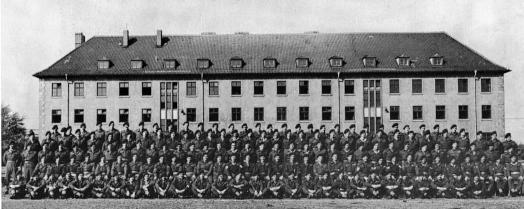
Plate 23. 16th Independant Parachute Brigade Group Signal Squadron 4 September 1949 at London Barracks, Hanover
Click to enlarge the picture.
Cyprus 1951
The Squadron, with other units of the Brigade, embarked on HMS Triumph on 4 June 1951 after marching through the streets of Portsmouth led by a band of the 1st Battalion The Parachute Regiment. The unit had in fact been on standby for Operation TRIMED for thirteen days. However, time had not been wasted and everyone had converted to parachuting from Hastings aircraft. Eight days were spent aboard HMS Triumph at sea until arrival at Famagusta in Cyprus on 12 June. The Squadron moved by train the next day to Nicosia and into a tented camp at Waynes Keep. The train journey on the 'Emmett' railway, as it was nicknamed, was unusual in that the train stopped every so often for the soldiers to get out and collect wood to refuel the engine fire. The standby in Cyprus continued for some months. GOC British Troops Egypt visited the Squadron on 24 July. In the end, the deployment to Iran never took place as the crisis did not develop further. A different treat was in store.
Egypt [Suez Canal Zone] 1951 - 1954
In response to a civil insurrection in Egypt, 16th Independent Parachute Brigade Group deployed from Cyprus to the Suez Canal Zone in October 1951. The Squadron moved by air and sea from Cyprus and established itself in another tented camp at Fayid-Fanara Garrison where 3 GHQ Signal Regiment was also stationed.
Brigade static communications were established including line and SDS. The Squadron was also involved in IS duties including the provision of escorts and patrolling oil pipelines and pumping stations. Major V H Martin MC took over command from Major Smith in December.
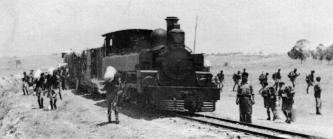
Plate 24. The 'Emmett' Railway Cyprus 13 June 1951
Click to enlarge the picture.
In June 1952 the Signal Squadron and the Brigade moved to Ismailia into yet another tented camp called St Gabriels at Ferrypoint, Moascar. The situation in Egypt came to a head on 23 July when Gernal Neguid ousted King Farouk by a coup d'etat. King Farouk abdicated on 26 July and power was effectively transferred.
Life again settled down into a Canal Zone routine. Numerous exercises were held involving all phases of war. Air procedures were well rehearsed and exercises were carried as far afield as Transjordan, Sinai and Cyprus. The following adaption of a familiar verse which was written in September 1952 by an unknown SNCO of the unit gives some clue to the general feeling for serving in the Canal Zone at the time. It was no doubt written for fun as morale was always high:
LIFE IS TEDIOUS
The sun comes up and the rain comes down,
The 'Q' walks round with a worried frown,
The MT Sergeant's pants are torn,
The Sergeant Major's are very worn,
The morale's gone somewhere underground.
The sets are dis' and the jeeps won't start,
Everyone seems to be losing heart,
The tent walls flap and the mossies sting,
No-one's interested in anything.
Troubles piling all around, the airfare home is £51
The food in the Mess gets worse and worse,
We have obviously inherited somebody's curse.
There's a fly a buzzing around my head,
Just no sense in going to bed.
The pi-dogs howl and the Orderly Sergeants yell,
Everything seems to be going to hell.
The morale in the Squadron gets lower and lower,
We won't get reinforcements for 6 months or more.
But I've heard it said, and its true I'm sure,
That if things don't improve, the outlooks poor.
Major J G Geary took over command of the Squadron from Major Martin in January 1954 some seven months before the unit packed up and returned to England.
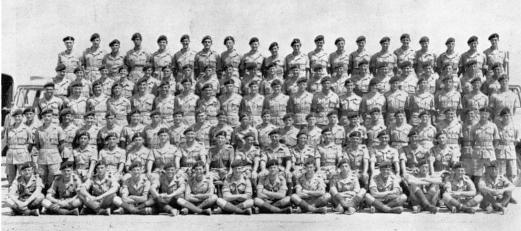
Plate 25. 16th Independant Parachute Brigade Group Signal Squadron 12 April 1952 in the Suez Canal Zone.
Click to enlarge the picture.
Aldershot 1954 - 56
The Signal Squadron completed its return from the Canal Zone by August 1954. This time it took up a new home in Malta Barracks, Aldershot. Training became intense with the unit being involved in some forty exercises between January and August 1955!
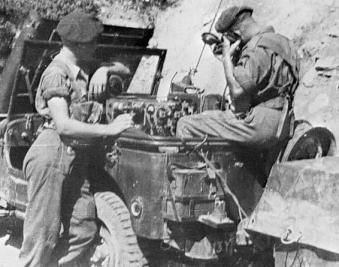
Plate 26. Jeep and Crew 1952
Click to enlarge the picture.
On 15 April 1955, His Royal Highness The Duke of Edinburgh reviewed 16th Independent Parachute Brigade Group in Rushmoor Arena. The Squadron was involved and provided a PA system to broadcast words of command over the large area occupied by the Brigade on parade. Life continued in its hectic way in Aldershot until the summer of 1956.
Suez 1956
On 26 July 1956 Colonel Nasser, the President of Egypt, announced the nationalization of the Suez Canal and its takeover from the Canal Company. Takeover of the Canal installations started immediately after Nasser's announcement and both Britain and France viewed this unilateral act by Egypt as a threat to their strategic and economic interests. Both countries lodged formal protests in Cairo on 27 July and started to take appropriate military measures in preparation for possible future operations.
Throughout August a joint Anglo-French plan (eventually named Operation MUSKETEER) was developed which called for the capture of Port Said as the first main objective. The plan also called for a considerable military contribution from Britain which included 16th Independent Parachute Brigade Group. In early August the Reserves were recalled and on 22 August British women and children were evacuated from Egypt. By September the Brigade had concentrated in Cyprus. The Squadron had also moved to Cyprus during August aboard HMS Theseus.
Throughout September and October little progress was made towards a political solution. By mid October the Anglo-French force had completed its concentration in the Mediterranean and was as prepared as possible for any contingency. On 28 October Israel carried out a pre-emptive attack on Egypt (Operation KADESH) and within seven days they had not only occupied Sinai but inflicted severe damage on Egypt's air and ground forces.
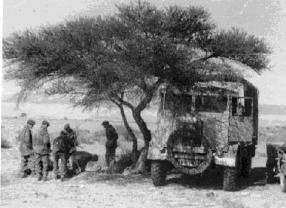
Plate 27. 'The only shade for miles'. 1953 taken in the Suez Canal Zone, showing a brew in preparation.
Click to enlarge the picture.
Political authority was given on 31 October for Operation MUSKETEER to go ahead. The first phase of the operation involved an air offensive against Egyptian military targets. On 5 November the airborne assault was launched at two points on the outskirts of Port Said to cut off any enemy reinforcements reaching the town once the seaborne assault was underway. 3rd Battalion The Parachute Regiment dropped on El Gamil airfield to the west of Port Said at 0515 hours. At 0530 hours the 2nd Regiment de Parachutistes Coloniaux dropped close to the Canal and to the south of the town. Dropping with 3rd Battalion The Parachute Regiment at El Gamil was Brigade Tac HQ and a Signal Squadron element consisting of Lieutenant Flynn, Sergeant Paxton and 17 others including Signalman Chris Davidson. A Tac Brigade Command Net and a rear link to HQ Ships was quickly established using a manpack WS No 62. The landing was opposed and fighting broke out. Signalman Paddick was wounded by mortar fire on the DZ and evacuated. All manpack parachute wireless sets arrived safely but in the following heavy drop all three WS No 52 in trailers were damaged. This damage was caused primarily because inadequate old wartime equipment was used. Signalmen Blackmore and Herrington dropped with the French battalion to operate the sets for the British liaison officers.
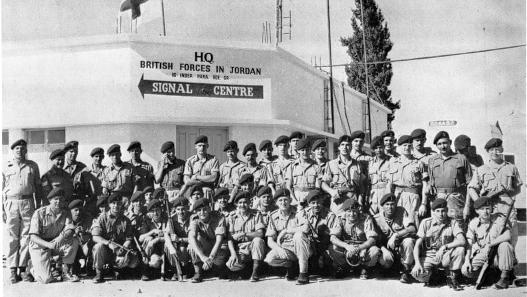
Plate 28. 16th Independant Parachute Brigade Group Signal Squadron August 1958 on Amman Airfield.
Click to enlarge the picture.(153k)
The seaborne assault on the beach to the North and adjacent to Port Said started at 0500 hours on 6 November 1956. At about 1600 hours, 16th Independent Parachute Brigade Group (less 3rd Battalion The Parachute Regiment) disembarked from LSTs near the Casino Palace Hotel. The Signal Squadron landed in the early evening and immediately occupied a block of flats some 100 yards from the landing point. The flats had only just been vacated and had been the homes of some of the Egyptian Canal pilots. At about 1200 hours the next day the Squadron moved out of the flats and into the Brooke Bond Tea factory alongside the industrial canal. This factory remained the unit's home for the remainder of their stay in Egypt.
A UN ceasefire on 7 November frustrated the invading force in achieving its final objectives. Four days later the Brigade Group was ordered to return to Cyprus after being relieved by units from 3rd Division.
A UN Emergency Force started to arrive in Egypt at Port Said in mid November and started to interpose itself between the warring factions. Port Said was finally evacuated by the Brigade in December.
It was originally intended that the majority of 16th Independent Parchute Brigade Group should return direct to UK from Suez. However, in Cyprus, Ethniki Organosis Kypriou Agoniston (EOKA) had taken full advantage of the Suez crisis and had continued its campaign of terror and intimidation. The Squadron moved back to Cyprus from Egypt in December 1956 by air and sea. The whole Brigade had its vehicles and equipment withdrawn and stockpiled for future use in IS operations on the island. The Squadron was then flown back to England just in time for Christmas 1956.
Aldershot 1957 - 1958
On return to Aldershot the Signal Squadron took up residence in yet another barracks, this time in Waterloo (East) barracks. The normal hectic routine of training was quickly re-established. Parachute drop techniques were developed for the Champ and its trailer fully laden with a complete WS No 52 and WS No 62. Great attention was paid to recruiting and it was not until well into 1958 that the unit came up to full strength.
On 22 January 1958 the Squadron moved its home yet again to Barossa Barracks, Stanhope Lines, Aldershot. Stanhope Lines stood where Montgomery Lines are now established. The Lines were named after Mr Stanhope who had been Secretary of State for War 1887-1892.
On 7-8 June 1958 the Squadron celebrated its tenth anniversary with a Regimental Weekend which included a dance and a Church Parade. The salute was taken by Major General R J Moberly CB OBE, Signal Officer in Chief and formerly the Commanding Officer of 1st Airborne Divisional Signals and Chief Signal Officer Airborne Corps.
Routine was again disrupted, this time by a revolution in Iraq.
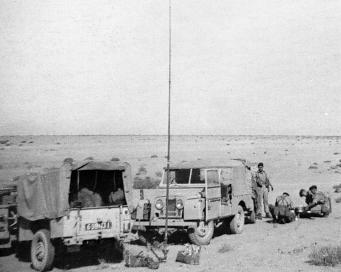
Plate 29. 'En route' for Aquaba September 1958.
Click to enlarge the picture.
Jordan 1958
In February 1958, King Hussein of Jordan and King Feisal of Iraq signed an agreement which provided for an Arab Union between the two countries. Prospects for the future of this Union came to an abrupt end with the murder of King Feisal and the revolution in Baghdad a few months later.
Elements of the Brigade including the Headquarters and the major part of the Squadron were warned on 13 June to move to Cyprus. This deployment, involving two battalions, was designed not only to reinforce the security forces on the island but to allow the Brigade to undertake intensive training in the theatre for anyone of six possible contingency operations. The Squadron flew in VC 10s from Lyneham to Nicosia on 14 June and within 12 hours of arrival the Brigade Command Net was open as elements of the Squadron deployed with one of the battalions on a cordon and search operation. Communications were established in 25 minutes and links were opened to HMS Eagle and RAF Nicosia for close air support. The Squadron, during its stay in Cyprus, was accommodated in a tented camp which was constructed on a barren patch of ground previously used as a cricket pitch by the Grenadier Guards who were accommodated in the adjacent Elizabeth Camp.
The British Government responded rapidly when the request for assistance came from King Hussein and the Brigade was warned for operations in Jordan at 0230 hours 17 July. At 0500 hours on the same day the first Beverley aircraft left Nicosia for Amman in Jordan. Major Peat, who had taken over command of the Squadron the day before leaving England, and a small number of operators were on this first aircraft. Following aircraft experienced delay caused by problems of overflying Israel. The airlift was eventually resumed and some 20 minutes after landing radio contact was established with Cyprus. Operation FORTITUDE, as it was called, involved 16th Independent Parachute Brigade Group in securing Amman airfield and protecting King Hussein and the Government of Jordan. A small element of the Squadron remained in Cyprus with the 1st Battalion The Parachute Regiment.
A tented camp was erected on Amman airfield and a Signal Centre was established. Brigade radio nets, rear links to Cyprus, a link to Aqaba and line communications were also quickly established.
Reinforcements arrived from Cyprus through Aqaba on 30 July. The prompt deployment of troops to Jordan undoubtedly prevented the potentially dangerous situation in Jordan getting out of hand. The country remained quiet and the whole operation passed without a shot being fired.
The Brigade withdrew back to Cyprus by air between 25-29 October. The Signal Squadron staged through a tented camp near Famagusta before returning from Nicosia by air to England during the first two weeks of November. Operation FORTITUDE came to a satisfactory conclusion and the majority of the Squadron were back home for Christmas. A Signal detachment, however remained on the island with the 1st Battalion.
Corporal Easter, for his devotion to duty in Jordan, was awarded the BEM. He manned the Brigade rear link to Cyprus alone and without a break for almost four days. He was at the time suffering from a combined attack of dysentry and malaria and, after collapsing at his set, was evacuated to hospital. Signalman Appleton was also awarded a Mention in Despatches for outstanding duty as a telegraph operator on a special high-speed rear link to Cyprus.